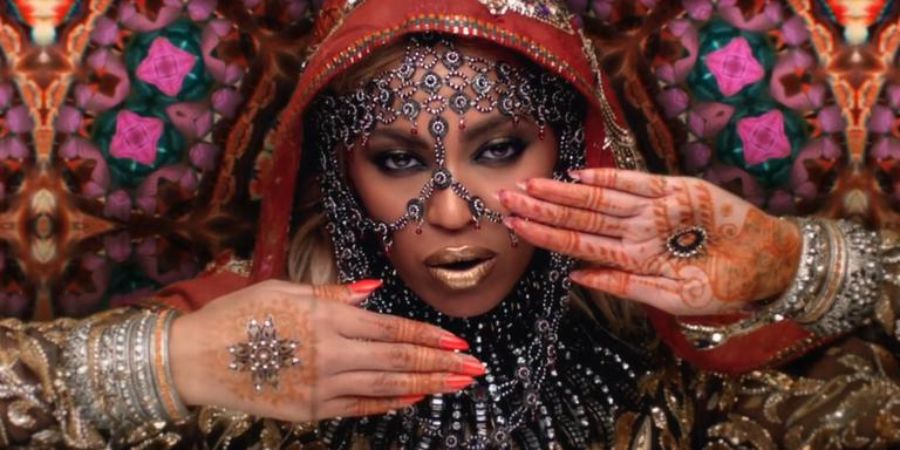

The basic definition of cultural appropriation or misrepresentation is when somebody adopts some of the aspects of the culture which is not their own. It’s the adoption of elements from one culture by a person who is not from the same culture. For example, a non-native American wearing a native American war bonnet as a fashion accessory. The concept of cultural misrepresentation can also be seen in the power dynamics of the classes; the people of the dominant culture takes the elements from the culture of people who have been oppressed by the dominant. But this shouldn’t be confused with cultural exchange because these both are entirely different, cultural exchange is when two people from different culture mutually exchange the culture. Whereas cultural appropriation is when the member of one culture adopts the elements from a different culture without representing it in a proper way which might lead to misinterpretation of the people who see it. These misrepresentations are usually shown in the media, music albums, movies and books. In the minds of the viewers of the culture which has been appropriated sets an image of the culture that is being represented by the dominant class and this makes them feel that the culture which is being shown is the original culture. This paper points out the misrepresentations of the Indian culture in the video of the song Hymn for the weekend by the band Coldplay which was shot in the streets of Mumbai, India.

How the people from the West shows India:
In November 2015 a British rock band called Coldplay released a video song ‘Hymn for the weekend’ which also featured Beyoncé who is again a singer from the West. The video for the song was shot in India during the festival of Holi on the streets of Mumbai. Sources say that the video was highly criticised when the band released it2. At first, the band released only the audio of the song then it was highly appreciated, but the views changed when the video song came out. Though the lyrics of the song was very catchy, the video was hated by the people because it was culturally appropriated and misrepresented the idea of the culture in India and did no justice to the cultural beauty of India.
The video is undoubtedly a cultural appropriation. A white man in a village with the Indian kids throwing Holi and celebrating the festival of colours is something which should not be just seen as part of a song. But the entire video is only about cherry-picking the images of India which one needs to focus on. The song opens with a lingering shot of a white peacock. In the next second, we see temples, a small boy coloured his body with blue paint which represents lord Shiva, holy men and then comes the children blowing the Holi colours in the air on the streets of Mumbai. The streets in India have autos, colours, flowing fabrics and people working but keeping in mind that India is not only about the streets of Mumbai, but it also is an enormous country with separate states, food, clothing, languages, music, movies which differs from each state. In the video, West decides to ignore the nuance of India and depict India in such a way that it is being oppressed as they only show the streets of Mumbai and not the wealthy streets of the same city. The video is nothing but four minutes of the colourful representation of India only the videographer would capture but not what it shows. The viewers of this song from the West see the culture of India in a very different way as it has been appropriated in the video and they would say that India is so colourful but which is not. The West dominates the Indian culture and misrepresents it in the way they want to show.
The misrepresentations in the song:
The reason Coldplay and Beyoncé are accused of cultural appropriation is mainly that Beyoncé is dressed up as a Bollywood star. The clothing that she wore does not show Indian culture, and the colour of the dress is not as colourful, the jewellery and accessories she’s wearing is not Indian and does not represent anything Indian. And Beyoncé is shown as a Bollywood actor, but she is not convincing as a Bollywood actor. Also, the band fails to show the entire image of India as they only show the streets. The Coldplay exclusively focuses on the depiction of poorer places in India like the slums of Mumbai and not showing the wealthier ones. The song hymn for the weekend cannot be just wept off as a regular song because there is a lot to be looked into as an Indian. The song is a part of the system of representation which the west shapes and understands India.
In the video, Martin and his band members are portrayed as the dynamics and the high-class westerners who enter the city with their pop music. But they are not treated as outsiders but are integrated by the people. Perhaps, the western media’s infatuation is the lack of understanding of the social and political context. The carelessness in depicting India and Hinduism. The holy men in saffron, stone idols of god covered with garlands which are representing the whole country but the entire country are limbed with the conflicts from the Hinduism. Coldplay further romanticises the concept of Hinduism. The West shows the Indian culture as a paradise filled with harsh realities.
These videos from the West are just for the outsiders like the westerners’ is a medium to exploit the Indians. India is seen as a playground for all these rich west people to explore and use for cultural and economic gain. India has always been seen as the vessel which exists in the westerners who find themselves. White people are never comfortable in sharing the original stories of their own or even acknowledging the complexity of the brown people. The Indian culture is usually a series of cool symbols which are stripped of. Finally, it would have been appreciated if Coldplay included the people of India and given equal importance as presented to the westerners. The western songs and media have to increase their works in such a way that it needs to include the people of India more than the people of the West. It has to represent in such a way that none in the world sees us. In this particular song, there is nothing significant of the Indian culture, which is being used by the Indian.





